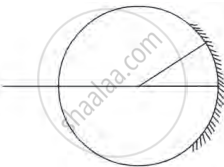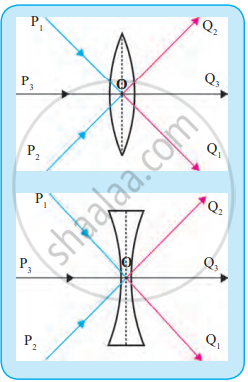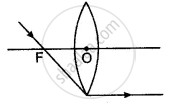Topics
Gravitation
- Concept of Gravitation
- Force
- Motion and Rest
- Centripetal Acceleration and Centripetal Force
- Kepler’s Laws
- Newton’s Universal Law of Gravitation
- Uniform Circular Motion (UCM)
- Earth’s Gravitational force
- Acceleration Due to Gravity (Earth’s Gravitational Acceleration)
- Concept of Mass and Weight
- Gravitational Waves
- Free Fall
- Gravitational Potential Energy
- Weightlessness in Space
Periodic Classification of Elements
- History of Periodic Table: Early Attempts at the Classification of Elements
- Dobereiner’s Triads
- Newland's Law of Octaves
- Mendeleev’s Periodic Table
- Merits and Demerits of Mendeleev’s Periodic Table
- Modern Periodic Law
- The Modern Periodic Table
- Structure of the Modern Periodic Table
- Modern Periodic Table and Electronic Configuration of Elements
- Groups and Electronic Configuration
- Periods and Electronic Configuration
- Periodic Properties
- Valency
- Atomic Radius Or Atomic Size
- Metallic and Non-metallic Characters
- Group VIIA Or Group 17 (The Halogens)
Chemical Reactions and Equations
- Chemical Reaction
- Chemical Equation
- Balancing Chemical Equation
- Types of Chemical Change or Chemical Reaction
- Direct Combination (or Synthesis) Reaction
- Decomposition Reactions
- Single Displacement Reactions
- Double Displacement Reaction
- Energy Change in Chemical Reactions
- Rate of Chemical Reaction
- Factors Affecting the Rate of a Chemical Reaction
- Oxidation, Reduction and Redox Reactions
- Corrosion of Metals
- Rancidity of Food and Its Prevention
Effects of Electric Current
- Electric Circuit
- Ohm's Law (V = IR)
- Heating Effect of Electric Current
- Magnetic Effect of Electric Current
- Right-hand Thumb Rule
- Magnetic Field Due to Current in a Loop (Or Circular Coil)
- Magnetic Field Due to a Current Carving Cylindrical Coil (or Solenoid)
- Force on a Current Carrying Conductor in a Magnetic Field
- Fleming’s Left Hand Rule
- Electric Motor
- Electromagnetic Induction
- Galvanometer
- Fleming’s Right Hand Rule
- Types of Current
- Electric Generator
Heat
Refraction of Light
Lenses
- Concept of Lenses
- Spherical Lens
- Convex Lens
- Images Formed by Convex Lenses
- Concave Lens
- Images Formed by Concave Lenses
- Sign Convention
- Lens Formula
- Magnification Due to Spherical Lenses
- Power of a Lens
- Combination of Lenses
- Human Eye
- Working of the Human Eye
- Eye Defect and Its Correction: Myopia Or Near-sightedness
- Eye Defect and its Correction: Hypermetropia or Far-sightedness
- Eye Defect and Its Correction: Presbyopia
- Persistence of Vision
Metallurgy
- Types of Element: Metals
- Physical Properties of Metals
- Chemical Properties of Metal
- Reactions of Metal
- Reactivity Series of Metals
- Types of Element: Non-metal
- Physical Properties of Non-metal
- Chemical Properties of Non-metal
- Ionic Compounds
- Metallurgy
- Basic Principles of Metallurgy
- Extraction of Reactive Metals
- Extraction of Aluminium
- Extraction of Moderately Reactive Metals
- Extraction of Less Reactive Metals
- Refining of Metals
- Corrosion of Metals
- Prevention of Corrosion
Carbon Compounds
- Carbon Compounds in Everyday Life
- Bonds in Carbon Compounds
- Carbon: A Versatile Element
- Properties of Carbon
- Hydrocarbons
- Structural Variations of Carbon Chains in Hydrocarbons
- Functional Groups in Carbon Compounds
- Homologous Series of Carbon Compound
- Nomenclature of Organic Compounds
- The IUPAC System of Nomenclature
- Chemical Properties of Carbon Compounds
- Ethanol
- Ethanoic Acid
- Macromolecules and Polymers
Space Missions
- Concept of Space Missions
- Artificial Satellites
- Types of Satellite
- Orbits of Artificial Satellites
- Space Launch Technology
- Space Missions Away from Earth
- India’s Space Programmes: Chandrayaan – 1
- India’s Space Programmes: Chandrayaan – 2
- India’s Space Programmes: Chandrayaan – 3
- India’s Space Programmes: Mangalyaan (Mars vehicle)
- India’s Space Programmes: Missions to Other Planets
- India and Space Technology
- Space Debris and Its Management
School of Elements
The Magic of Chemical Reactions
The Acid Base Chemistry
- Properties of Acids
- Strength of Acidic or Basic Solutions
- Strength of Acidic or Basic Solutions
- Acids, Bases and Their Reactivity
- Acid or a Base in a Water Solution
- Preparation and Uses of Baking Soda
- Preparation and Uses of Bleaching Powder
- Preparation and Uses of Washing Soda
- Preparation and Uses of Plaster of Paris
- Chemicals from Common Salt - Soap as a Salt
The Electric Spark
All about Electromagnetism
- Magnetic Force
- The Bar Magnet
- Right-hand Thumb Rule
- Magnetic Field Due to Current in a Loop (Or Circular Coil)
- Magnetic Field Due to a Current Carving Cylindrical Coil (or Solenoid)
- Force on a Current Carrying Conductor in a Magnetic Field
- Electric Motor
- Electromagnetic Induction
- Alternating Current (A.C.) Generator
- Direct Current Motor
- Household Electrical Circuits
Wonders of Light 1
- Spherical Mirrors
- Concave Mirror
- Concave Mirror
- Sign Convention
- Linear Magnification (M) Due to Spherical Mirrors
- Images Formed by Sperical Lenses
- Convex Lens
- Sign Convention
- Magnification Due to Spherical Lenses
- Power of a Lens
- Human Eye
- Eye Defect and Its Correction: Myopia Or Near-sightedness
- Spherical Mirrors
Wonders of Light 2
Striving for better Environment 1
- Pollution and Its Types
- Air Pollution and Its Causes
- Effects of Air Pollution
- Water Pollution and Its Causes
- Effects of Water Pollution
- Soil Pollution and its Causes
- Effects of Soil Pollution
- Noise Pollution
- Radioactive Pollution and Effects
- Abatement of Pollution
- Sustainable Use of Resources
- Introduction
- Basic Lens Terminology
- Principal Focus (F) and Focal Length (f)
- Experiment
Introduction
A spherical mirror is a curved mirror that forms part of a hollow sphere. It is of two types:
- Concave Mirror (Converging) – Reflects light inward, forming real or virtual images. Used in telescopes, headlights, and shaving mirrors.
- Convex Mirror (Diverging) – Reflects light outward, always forming a virtual image. Used in vehicle rearview mirrors and security mirrors.

Spherical mirror
Spherical mirrors follow the laws of reflection and are essential in optical devices and imaging systems.
Basic Lens Terminology
- Pole (P): The centre of the spherical surface of the lens where the principal axis meets the surface.
- Optical Centre (O): The point at the centre of the lens through which light rays pass without deviation.
- Centre of Curvature (C₁, C₂): The centres of the spheres whose parts form the surfaces of the lens. A lens has two centres of curvature.
- Radius of Curvature (R₁, R₂): The radii of the spheres whose parts form the lens surfaces.
- Principal Axis: An imaginary straight line passing through both centres of curvature and the pole.
- Aperture: The effective diameter of the lens that allows light refraction.

Optical centre of a lens
Principal Focus (F) and Focal Length (f)
1. Convex Lens (Converging Lens)
As seen in Figure (a), parallel light rays converge at a point (F₂) on the principal axis after refraction. This principal focus helps in focusing light, used in magnifying glasses and cameras.
2. Concave Lens (Diverging Lens)
As seen in Figure (b), parallel light rays diverge after refraction, appearing to come from a virtual focus (F₁). It is used in corrective glasses for myopia and optical instruments.
3. Focal Length (f)
Distance between the optical centre (O) and the principal focus (F).
- Convex lens → Positive focal length (+f) (light converges).
- Concave lens → Negative focal length (-f) (light diverges).

Principal focus of a lens
Experiment
1. Aim: To determine the focal length of a convex lens by obtaining the image of a distant object on a screen.
2. Requirements: convex lens, screen, metre scale, and lens stand.
3. Procedure
- Fix the screen in position.
- Hold the convex lens in front of a distant object (such as a tree or building).
- Adjust the position of the lens until a sharp image of the object appears on the screen.
- Measure the distance between the lens and the screen using a metre scale.
- Reverse the lens and repeat the process to obtain another clear image.
- Measure the distance between the screen and the lens again.
- This distance represents the focal length (f) of the convex lens.
4. Conclusion
- The distance between the screen and the lens is the focal length of the convex lens. The image of a distant object forms near the focus (F) of the lens.
- If a concave lens is used instead, a real image cannot be obtained on the screen, as concave lenses form only virtual and diminished images.
- This experiment helps in understanding the focal length and image formation properties of convex and concave lenses.

